They/them. Druidic Pagan. My patron is the Morrigan. Some thoughts and references to help me along. This blog is run by a nb, queer, intersectional feminist. Terfs, swerfs, nazis, white supremacists, pedos, colonialists, and anyone else that intends harm to marginalized and vulnerable people are not welcome on this blog and are strongly encouraged to fuck off.
Don't wanna be here? Send us removal request.
Text
The Morrigan and “Weakness”
While devoting yourself to a trio of primal goddesses heavily associated with battle, athleticism, sex and other activities that require a certain amount of bodily and mental strength, it’s important to realize that weakness is not inherently shameful. We see depictions of the Morrigan as fierce warriors, and think of them in terms of the heat and violence of battle, and the visceral energy of sex—but based on what we know of Celtic cultural and religious identity, I argue that weakness is intimately tied to strength.
We know through the lore and through accounts from people like Julius Caesar that the Celts were fierce warriors. Both men and women were regarded as powerful and strong, and were formidable enemies. Though they were not an organized civilization, the tribes scattered across Europe that we think of as the Celts shared a universal passion for the glory and honor of war.
And what, in warrior culture, is more honorable than death and injury sustained during battle?
Considering this, and with our knowledge that the Morrigan held dominion over war (both of the body and the land), we can then begin to recognize their connection to the other side of the coin.
In one of Macha’s stories, she is forced into racing horses while pregnant, and after crossing the finish line as the victor, she dies in childbirth. Before dying, she lays a curse on the people who caused her death, that in times of great peril, the men of the village would experience the same pain of childbirth and be unable to fight. By assuming that pregnancy was indicative of weakness and that this weakness made her incompetent, they doomed themselves. What they saw as weakness, was actually great strength. Macha died honorably, and the men lost the ability to prove themselves in battle. The story that most interests me is that of the Morrigan and Cuchulainn. In the Book of the Great Queen by Morpheus Ravenna, she suggests that the exchange between goddess and hero is symbolic of an initiation ritual representing the warrior’s dependence on the goddess. In order to be strong, he must accept that his success in battle can only be made possible through his submission to the goddess.
During that story Cuchulainn rejects the Morrigan’s offer of sex prior to a battle, thus asserting that he has no need of her blessing and can win the fight out of sheer will. In short, he’s full of himself and overestimates his strength—similar to the villagers in Macha’s story. In retaliation the Morrigan comes to him during the battle and wounds him:
“The she-wolf attacked him, and drove the cattle on him westwards. He throws a stone from his sling, so that her eye broke in her head. She goes in the form of a hornless red heifer; she rushes before the cows upon the pools and fords. It is then he said: I cannot see the fords for water.’ He throws a stone at the hornless red heifer, so that her leg breaks under her.”
(Source)
After the battle, Cuchulainn comes upon the Morrigan disguised as a hag. She offers him milk from her cow, which heals each of his wounds. With the healing of each wound, he blesses her and subsequently heals her wounds as well, bringing the exchange between goddess and hero full circle.
In their lore, the sisters call warriors to battle, and they themselves fight with the strength of an army. But through the stories of Macha and Cuchulainn we see another side—the importance of weakness as a sign of strength rather than an obstacle to achieving it.
So what does this mean for modern devotees?
Our society is no longer one solely focused on warfare. Most of us will never participate in literal battle, and quite a few followers of the Morrigan struggle with things like physical disabilities and mental illnesses. When researching the lore and culture of the ancient Celts, comparing ourselves to those standards can be disheartening. We’re not sword fighters and soldiers, and in some cases, the sexual nature of the Morrigan may be difficult to relate to as well.
If you’ve been called by the sisters, it’s natural to be intimidated, and to wonder “am I really worthy?” As someone who is physically able bodied, but deals often with the fatigue that comes with a mood disorder, I’ve wondered the same thing. But at every stage of my devotion to the sisters, I have never been shamed for being “weak”. In fact, on days when I’m at my lowest, they have often commended me for the smallest accomplishments. Getting out of bed and going to work is a battle won. Stepping out of my comfort zone to try something new is met with congratulations and praise.
The Morrigan know suffering. They are the fighters on the field and the sword in the hand, the wings of the mighty crow and the howl of the she-wolf. But they know the pain of labor, the agony of broken bones and failure. The sorrow of rejection and loss, mourning for the dead, and the stoop of aging.
They know what it’s like to lie in the dirt while your life escapes you, and be dependent on the blessings of a cocky hero in order to heal from the wounds he inflicted. They don’t fear weakness. They revel in it. They use it to prepare for the next battle. To recover from mourning. As followers of the Morrigan, we are taught to not feel shame when we are weak, but to respect that weakness, and treat it as an important part of the healing process.
446 notes
·
View notes
Text
THE MORRIGAN



WHO IS SHE?
The Morrigan is a triple goddess from Irish mythology who is associated with war, fate, and sovereignty. According to myth, she is often depicted as a crow or raven, and is said to appear in both a positive and negative guise, sometimes as a nurturing mother and other times as a destructive force. She is said to be the phantom queen of the Danaan People, the ancestral spirits of Ireland, and is sometimes depicted as a powerful seer or prophetic figure.
BASIC INFO:
Appearance: the Morrigan is often depicted as a fierce and powerful woman wearing a long, flowing black cloak or gown, and sometimes with feathers or a crown of feathers. She is also commonly associated with a black crow, which is said to be her messenger and the vessel of her power. Her appearance is usually associated with darkness and mystery, embodying the enigma and unpredictability of war and fate.
Personality: she has a complex and multi-faceted personality, often embodying multiple aspects of femininity. She is said to encompass aspects of the traditional maiden, mother, and crone archetypes, representing youthful zeal, maternal nurturing, and wise counsel, respectively. She is also known for her vengeful and bloodthirsty streak, embodying the brutal and ruthless nature of war and the chaos of fate. Despite her fierce and sometimes fearsome reputation, she is also viewed as a powerful protector and defender of the Irish people.
Symbols: cloak, spear, chariot, sword, and shield
Goddess of: magic, war, battle, life, death, sovereignty, fresh water, destiny, prophecy, and fate
Culture: Celtic
Plants and trees: willow, aspen, rowan, snapdragon, hawthorn, yew, belladonna, mugwort, rose, and nightshade (do not consume, handle with care!)
Crystals: ravenite, black agate, hematite, smoky quartz, bloodstone, onyx, charoite, black obsidian, labradorite, shungite, and black tourmaline
Animals: crow, raven, horse, eel, rook, serpent, and wolf
Incense: frankincense, myrrh, sandalwood, rose, cedar, juniper, and dragon’s blood
Colours: red, black, white, blue, and green
Numbers: 3 and 6
Zodiac: Sagittarius
Tarot: Suit of Swords, The Tower, Queen of Swords, Justice, 7 of Wands, and Death
Planet: Moon
Days: Monday, Imbolc, Lammas, Mabon, Samhain, Halloween, and full moons
Parents: Cailitin and Ernmas
Siblings: Ériu, Banba, Fódla, Gnim, Coscar, Fiacha, and Oll
Partner: The Dagda and an unnamed shapeshifting goddess
Children: Mechi
MISC:
Crows and ravens: the Morrigan is often associated with crows or ravens due to her nature as a deity of death, fate, and transformation. In Irish mythology, crows or ravens were often seen as messengers between the worlds of the living and the dead, and could be seen as omens of impending change or transformation. For the Morrigan, these birds served as her messengers and helped her carry out her duties as a deity of war, fate, and the supernatural. Additionally, the Morrigan herself was sometimes depicted as a crow or raven in the form of a woman.
Death: she is often associated with death because she is seen as a deity of fate and transformation, which can include death and rebirth. In Irish mythology, she is often depicted as a battle goddess who wields a spear or sword, and is seen as a bringer of violence and change. She is also associated with the concept of death as a natural and inevitable part of life, and is sometimes seen as a guide for the souls of the dead as they cross over to the afterlife.
War: in Irish mythology, she was often seen as a fierce and powerful warrior, who would appear in the form of a crow or raven to guide and aid the soldiers of the Tuatha de Danann, a group of gods and mythological beings. She was often invoked by soldiers in order to bring them victory in battle and could also be seen as a symbol of the chaos and destruction that can occur during war.
Triple goddess: she is often associated with the triple goddess archetype due to her connection with the number three and her role as a goddess of transformation and female empowerment. In Celtic mythology, the number three was often seen as sacred and powerful, and the Morrigan is sometimes depicted as embodying these three aspects of femininity: maiden, mother, and crone. This association reflects her nature as a powerful and multifaceted deity who encompasses the different phases of a woman's life, from youth and fertility to wisdom and maturity.
Samhain: in Celtic mythology, Samhain is believed to be a time when the boundary between the world of the living and the world of the dead becomes thin, allowing the spirits of the deceased to return to the world of the living. The Morrigan, as a goddess of death and transformation, is seen as playing an important role during this time, guiding and assisting the souls of the dead on their journey to the afterlife.
Magic: was seen as a powerful force that could wield the energy and power of these natural forces, and the Morrigan was often invoked as a source of magical power and insight during certain rituals and spells. Additionally, the Morrigan is sometimes depicted as a sorcerous figure in some myths, casting spells or curses and using her supernatural abilities to influence events on the mortal plane.
FACTS ABOUT THE MORRIGAN:
She owns a herd of enchanted and magical cattle.
Contrary to some interpretations, the Morrigan is not necessarily seen as an evil or destructive deity. In many myths, she is depicted as a protective and wise figure who aids and guides heroes on their journeys.
She is sometimes portrayed as a shape-shifter, able to take on the form of a crow or other animals.
The Morrigan is often associated with the number three, representing the three aspects of maiden, mother, and crone.
She is also associated with the Fae and the Banshee—a creature that generally takes on the form of an old woman who wails in mourning to announce the coming death of someone in the family.
The name "Morrigan" comes from Old Irish and means "phantom queen" or "great queen."
She is often associated with ravens or crows, which were seen as her messengers between the worlds of the living and the dead.
The Morrigan is known for appearing in the form of a woman with long, flowing hair, sometimes carrying a spear and/or a shield.
HOW TO INVOKE THE MORRIGAN:
Working with the Morrigan often involves building a relationship of mutual respect and trust with her. You can approach working with her in the following ways:
Research and study her mythology, folklore, and symbology to gain a deeper understanding of her nature and characteristics.
Set up an altar or sacred space dedicated to the Morrigan, and make regular offerings to her.
Perform rituals or spells in her honor to seek her guidance and power.
Meditate or visualize her presence in your life, and work on developing a direct channel of communication with her.
PRAYER FOR THE MORRIGAN:
“Hail Morrigan, maiden, mother, and crone. We call upon you, great and powerful deity, to guide us on our path, and protect us from harm. Teach us to be strong and fearless in the face of adversity and help us to find balance in our lives.”
“Bless our endeavors, and grant us success in all we do. In your name, I give thanks for your presence in our lives. Hail to you, the Morrigan.”
SIGNS THAT THE MORRIGAN IS CALLING YOU:
Repeatedly seeing signs of crows or ravens, which are associated with the Morrigan.
Feeling a strong connection to the themes of war, fate, and sovereignty.
Having vivid dreams or visions of the Morrigan or her symbols (e.g. a raven, a battle flag, etc).
Feeling drawn to read or learn about the Morrigan or Celtic mythology.
Experiencing strong emotions or changes in behavior that feel linked to the energy of the Morrigan.
Feeling the urge to explore or embrace warlike or competitive activities (e.g. sports, martial arts, strategy games).
Finding yourself drawn to stories of powerful women, goddesses, or wanting to honour and empower yourself.
Having a sudden urge to explore your own shadow or unconscious and to confront and transform it.
A sudden urge to create or engage in art, poetry, or music that connects to the Morrigan’s energy and symbolism.
OFFERINGS:
Red meat.
Mead.
Red wine poured into the ground.
Apples.
Milk.
Whiskey.
Storm water
Crow or raven feathers.
Knives and daggers.
Scrying.
Artwork and poetry.
Red foods.
Deep green, black and red stones/crystals.
Honey.
Dark chocolate.
Coins.
Studying Celtic mythology.
Blood (especially menstrual blood).
Traditional Irish foods.
DEVOTIONAL ACTS:
Creating sigils or magickal symbols associated with the Morrigan and her aspects (such as battle, war, death, etc) and charging them with your intention and energy.
Performing war dances, warrior rites, and ceremonies of protection and victory.
Paint your nails black or red while thinking of her.
Shadow work.
Exploring magic and divination related to the Morrigan, including the use of rune stones, scrying, and spirit communication.
Draw or paint her.
Participating in activities where you are willing to take risks and venture into the unknown, as the Morrigan is known for pushing individuals to embrace their destiny and seize control of their life.
Respecting the dead.
Working to protect and uphold your own personal sovereignty and destiny, and resisting outside influence or control.
Make a playlist that is dedicated to her, or listen to music that reminds you of her.
Lighting a black candle.
Feeding your local murder (crows).
Celebrating the changing of the seasons and honoring the cycles of life and death.
Praying and making offerings to the Morrigan, seeking her guidance and power for your magical and spiritual practice.
Screaming your heart out when alone in the woods.
Performing blessings and healing rituals for fresh water bodies, such as lakes, rivers, and streams, to honor the Morrigan’s association with water.
Standing up for yourself.
Exercising (especially if it’s challenging).
Celebrate Samhain.
313 notes
·
View notes
Text
this is your thanksgiving reminder that the chinook tribe is still fighting for federal recognition, which means they are unable to access programs and resources. please take some time today to sign their petition and donate if you’re able to. and if you live in washington or oregon please write to your elected officials.
57K notes
·
View notes
Text

I don’t consider myself catholic anymore, but some years ago, a priest friend of my parents gave them a handful of rosaries that he got while visiting some holy sites in occupied Palestine. Each of the rosaries had the western name of the cities they were made in.
This one had the name “Jerusalem” painted on it. It had been hanging from the rear view mirror of my old car for years at my dad’s insistence (I kept it up mostly bc I knew it gave my parents some peace of mind while I was driving around late at night).
After my parents sold my old car earlier this year, my dad sent me a package of stuff that had been in it that I might want in my new (used) car, including this rosary.
I wasn’t entirely sure what to do with it, but in the spirit of Palestinian liberation and sovereignty, I decided to fix the name of the city that it was made in to reflect the Arabic/Palestinian name for it - Al Quds
Saoirse don Phalaistín 🇵🇸
1 note
·
View note
Text
I feel like this version of the Matron of Ravens was so much closer to the Morrigan than the WOTC version of the Raven Queen

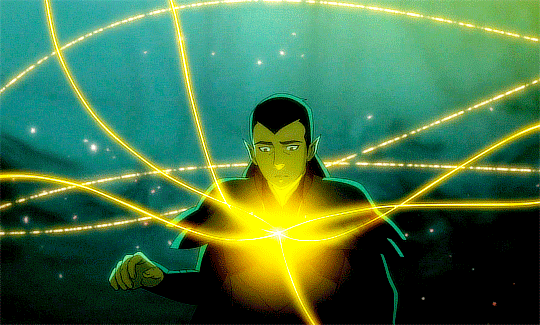
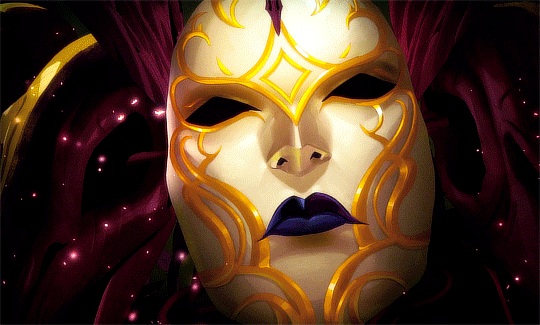
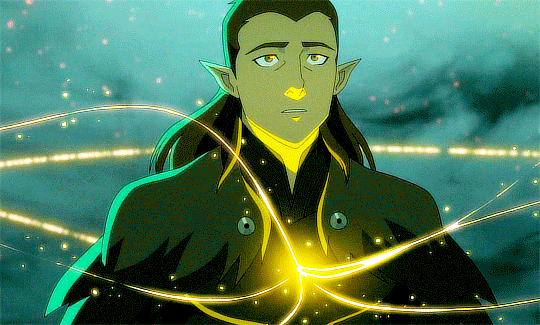
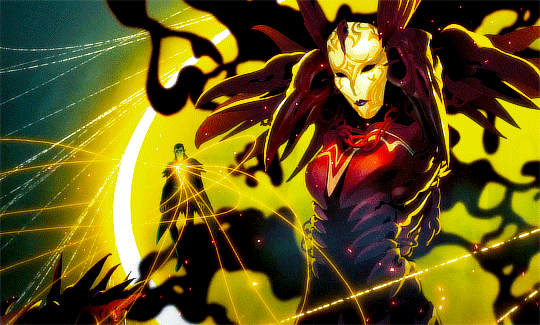


You are fate-touched, able to see and bend the threads around you. Understand the wholeness of what you serve, Champion.
2K notes
·
View notes
Text
1. Inv 9 of swords
2. Inv devil
3. Inv knight of swords
4. Upr 7 of pentacles
5. Upr King of wands
6. Inv sun
7. Upr Ace of wands
8. Inv king of cups
9. Inv str
This was a career meaning. Overall it seems like I’m depressed and lacking confidence and direction. I need to just boot up bitch and do it, come up with a plan and put confidence in myself
Some New Tarot Spreads for Uncertain Times

This first one I called “A Path Forward” and it kinda weighs three options for moving forward in an uncertain situation.
Card 1: Represents you. You could choose an indicator, if that’s your sorta thing, but I’m a glutton for punishment and like to let the deck tell me exactly what sort of disaster I’m being at any given point in time.
Card 2: What Crosses You. Basically a big influence causing the period of indecision, stagnation, and tension.
Card 3: Represents the Path You’re Currently On. Meaning, based upon the patterns you’re following and the energy at hand, this is the way things are headed.
Card 4: Road Block! This is what’s keeping you from moving forward on the path you’re currently on.
Card 5: Alternate Route #1. This can be an option you’ve already considered or a suggestion someone (heck maybe the cards suggest it) gave you.
Card 6: Road Block for Alternate Route #1. Self explanatory.
Card 7: Alternate Route #2. Just like the first alternate route, this is just another possible path to take.
Card 8: You guessed it, this is a Road Block to Alternate Route #2. But don’t worry, there are still three more cards left in this reading.
Card 9: Overcoming the road block for the path you’re on. This should be a practical action to take towards pushing through and continuing on your way.
Card 10: A means of overcoming the road block for Alternate Route #1. Again. Practical action to take. A means of clearing your options.
Card 11: A means of overcoming the road block for Alternate Route #2.
This spread is meant less to be an outcome thing, and more of a means of examining some options when it feels like you’re spinning your wheels.

The second spread I’ve (for now) called the “Key to Your Purpose” spread and is meant for those existential “What do I wanna do with my life?” sort of times.
Card 1: Again, this will represent you. Just like the last spread, you can pick an indicator, or let the cards call it like it is.
Card 2: What Crosses You. The big influence/situation that’s got you feeling this way.
Card 3: The Path You’re On. What you’re currently doing!
Card 4: The Thing You were Meant to Do. What it is you’re being called to do. It could align well with Card 3. It might not.
Card 5: The Turning Point. The means of moving from the path you’re on, to the path you’re meant to be on. Like turning a key that unlocks a door.
Cards 6-8 are practical actions to take in order to achieve this. Card 5 gives you the big picture, but 6-8 are meant to be the little steps to take.
Card 9: Your Purpose. Sort of an outcome card. This card should (hopefully) grant some closure. A goal to work towards. A purpose for life that is achievable through the advice given in the earlier cards.
Hope these are helpful to someone!
Forest Blessings, /|\ Rachel
2K notes
·
View notes
Text


Folks think that witchcraft is mainly about rituals. It's actually a lot more about soup.
Got to play thru the REKA playtest and--wow. Talk about a game made for me. Building, decorating, outfits, lil quests, no health or food meters... just a beautiful and inspiring atmosphere to run around in~
3K notes
·
View notes
Text
I just. Mc fucking. Had a raven circle over my head while outside experiencing the eclipse.
0 notes
Text
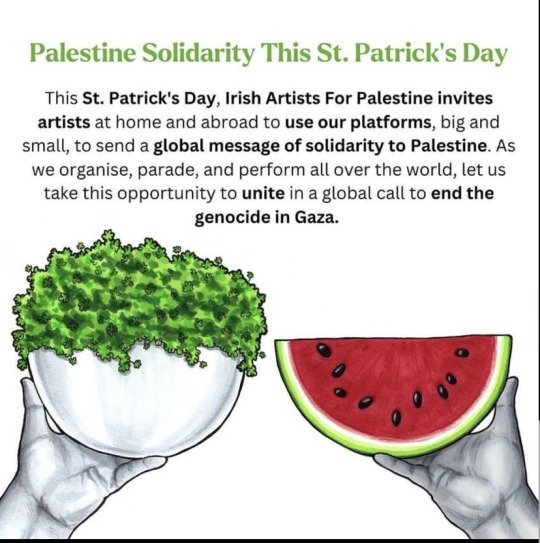
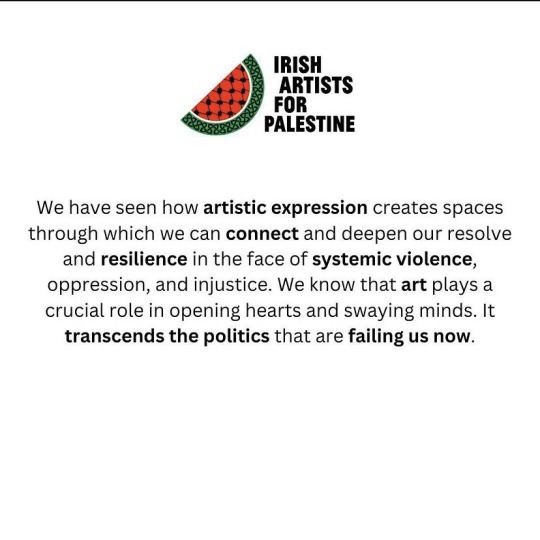
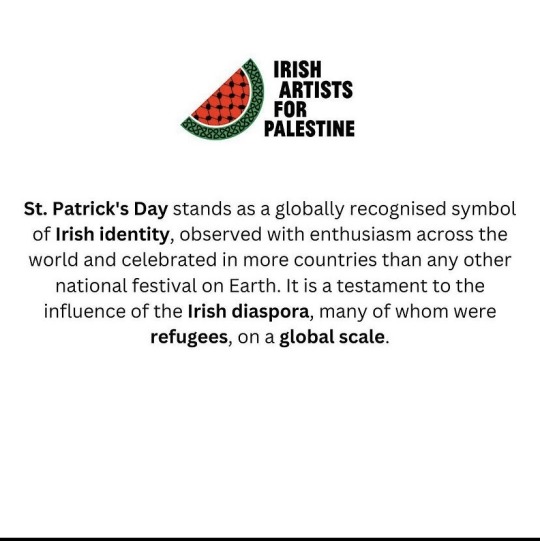


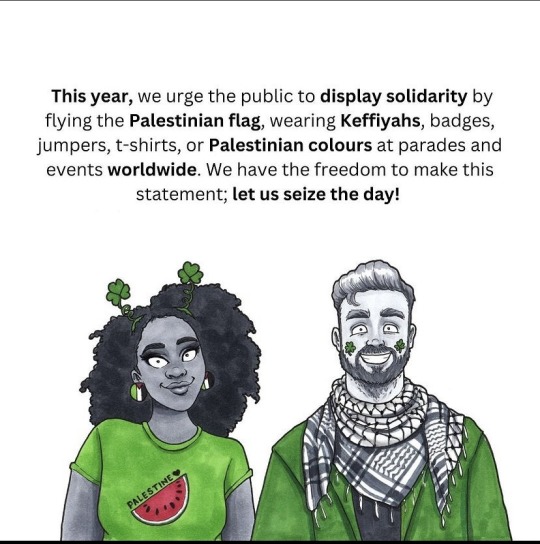
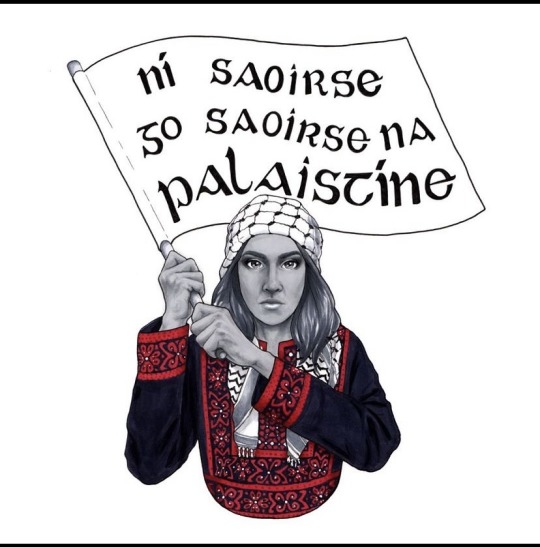
From Instagram https://www.instagram.com/irish.artists.for.palestine?igsh=ZWI2YzEzYmMxYg==
Captions have been added in ALT text.
253 notes
·
View notes
Text
Im fully taking lrb as an omen
The Morrigan has spoken. Palestine will be free
0 notes
Text
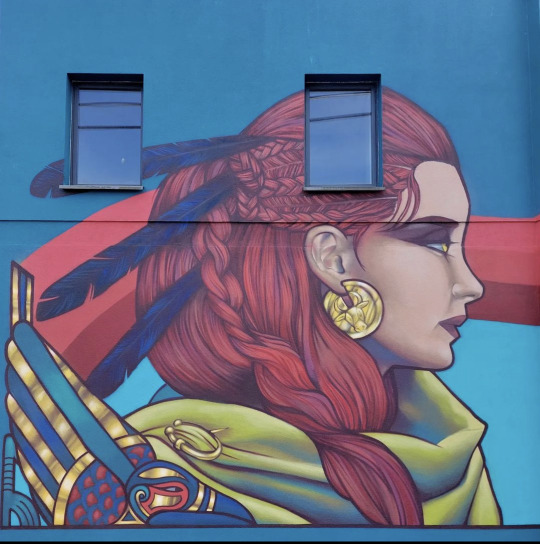


Credit: https://instagram.com/thisisfriz
From the artist's IG post:
"I was so happy when the good folk at the DRAWDA festival approached me with this brief. The Mórrígan, one almighty Goddess of War from Irish Mythology.
My depiction of her stems from her appearance in one of Ireland's most famous epic tales, An Táin Bó Cuailnge. When her amorous advances to the hero Cúchulainn are rebuffed she makes it her mission to become a thorn in his side. In this story she appears as a beautiful woman, a hag, an eel, a cow and a crow. In my mural depict her as the beautiful woman mirrored by her wolf self. Framed by an eel and crow that designed inspired by my recent trip to Trinity College to finally see the Book of Kells for reals."
25 notes
·
View notes
Text

Harvest Moon
Copic markers and coloured pencils on paper
Instagram - ArtStation - Website - Inprnt - Etsy - TikTok
8K notes
·
View notes
Text
I hate how the pagan community is infested enough with white supremacists and antisemites enough that I have to add that addendum to my posts, and yet here we are
0 notes
Text
Happy Yule. May the returning light bring with it peace, comfort, and a free Palestine
#the morrigan is the goddess of war and sovereignty#we support the fight for Palestinian freedom in this home#(antisemites as always fuck right off -btw)#you can criticise Zionism and the state of Israel without being antisemitic source: Jewish voice for peace
1 note
·
View note

